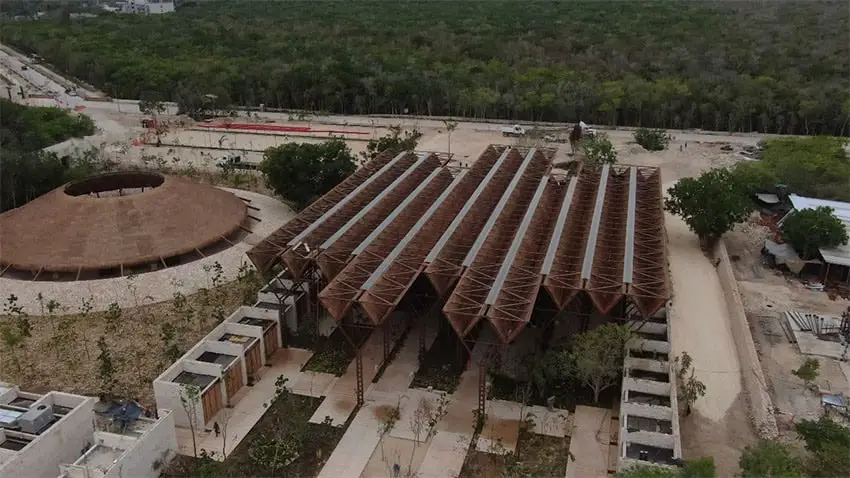Construction of the 2.5-billion-peso (US $140 million) Jaguar National Park in Tulum, Quintana Roo, should be complete within two months, government officials said, despite delayed environmental permits for a military-built luxury hotel in the park.
After a recent visit to the new park, Román Meyer Falcón, the head of the Agrarian, Territorial and Urban Development Ministry (Sedatu), said the development of the site located in northeastern Tulum is 92% complete, the newspaper La Jornada Maya reported on Sunday.
On June 16, however, the tourism website Reportur revealed that the failure to carry out an environmental impact report for a US $38 million hotel project in the park was drawing criticism.
The Defense Ministry (Sedena) began building the luxury hotel last year on a site adjacent to an old Navy aerodrome. Critics immediately expressed concern that construction was moving ahead rapidly before an environmental impact review had been released. The review, known as an MIA, is a federally mandated procedure.
As a result of rising criticism, Sedena recently formally petitioned the Environment Ministry (Semarnat) to conduct an MIA.
Over the weekend, Meyer said the park project is presently focused on the museum, which is being built on the grounds of the old aerodrome that was incorporated into the park grounds after a lengthy process of reforestation. The reconstruction of the old aerodrome will also include the park’s administrative buildings.

The museum area will also feature six “windows to the sea,” access to footpaths and bicycle paths, and a nearby lighthouse will be restored.
Park infrastructure has largely been modernized to improve the experience for visitors to both the park and Maya archaeological sites in and around Tulum, as well as to facilitate connectivity to the Maya Train.
Jaguar Park comprises nearly 2,250 hectares encompassing numerous protected natural areas such as beaches, forests, the Tulum Archaeological Zone and the Tulum National Park. The area is home to at least 966 species of flora and fauna, including 60 endemic species that can’t be found elsewhere. Construction on the project began in 2022 and the park was originally scheduled to be operational by February.
With reports from La Jornada Maya and Reportur
